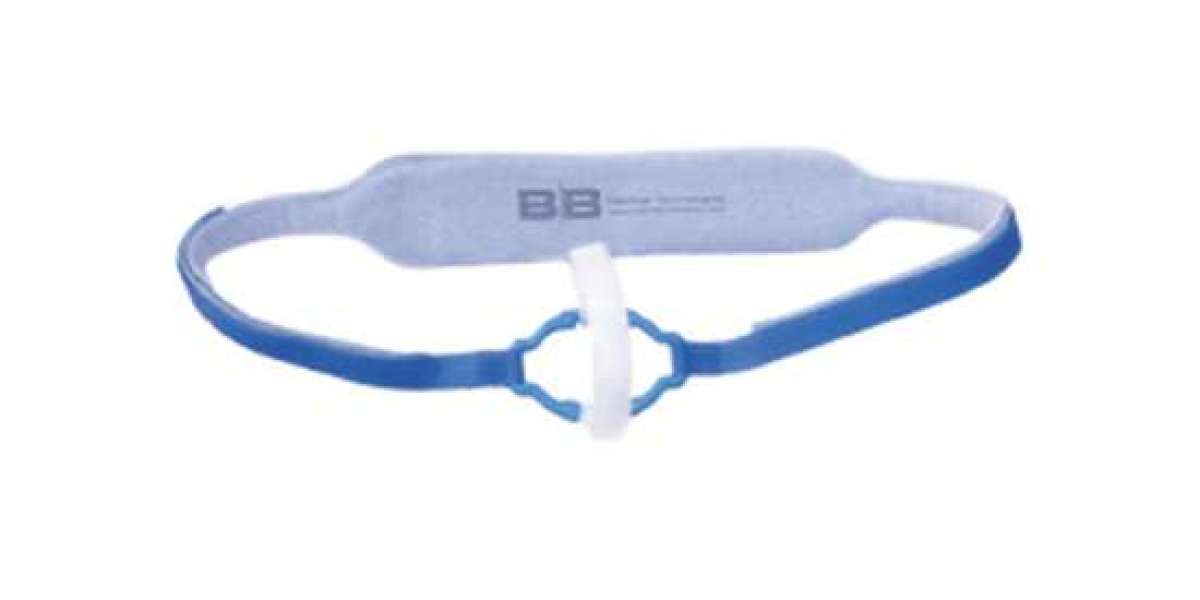Maintaining a secure airway is a cornerstone of critical care in intensive care units (ICUs). The Endotracheal Tube Holder plays a crucial role in stabilizing airway devices, preventing dislodgement, and enhancing overall patient safety. For patients requiring mechanical ventilation, proper use of an endotracheal tube holder can mean the difference between a smooth recovery and serious complications. This article explores the best practices for using these holders in ICU settings, focusing on patient safety, comfort, and device stability.
What Is an Endotracheal Tube Holder?
An endotracheal tube holder is a medical device designed to secure an endotracheal (ET) tube in place after intubation. Intubation is a life-saving procedure that ensures the patient's airway remains open, allowing mechanical ventilation and adequate oxygen delivery. Without a reliable securing method, an ET tube can become dislodged due to patient movement, medical interventions, or transport within the hospital—leading to critical consequences.
The endotracheal tube holder helps prevent these events by locking the tube firmly in place, reducing the reliance on traditional methods like adhesive tape, which may be less reliable, especially in emergency or high-moisture environments.
Why Proper Tube Stabilization Matters in ICUs
In the ICU, patients are often unconscious, sedated, or unable to communicate, making airway security even more critical. A poorly secured ET tube can cause:
- Accidental extubation
- Aspiration of gastric contents
- Airway trauma
- Interrupted oxygen delivery
To prevent such risks, healthcare providers must rely on secure, adjustable, and skin-friendly tube holders. These devices provide a consistent method for tube stabilization during extended intubation periods and while repositioning patients for nursing care or imaging procedures.
Patient Comfort and Skin Integrity Considerations
While airway security is the top priority, patient comfort is also essential. Traditional methods like adhesive tape often cause irritation, skin breakdown, or even allergic reactions, especially when used over prolonged periods. A high-quality ET tube holder typically features:
- Soft foam or padded backing
- Adjustable straps to minimize pressure points
- Latex-free and hypoallergenic materials
- Quick-release mechanisms for safe reintubation
These features help maintain skin integrity and reduce patient agitation. In patients who are conscious or lightly sedated, increased comfort also translates to reduced anxiety and better tolerance of the ventilation setup.
Preventing Pressure Injuries and Complications
Pressure-related skin injuries are common in ICU patients due to prolonged immobility and the presence of medical devices. One best practice when using an ET tube holder is to regularly assess and reposition the holder. This includes:
- Shifting the tube from side to side every few hours
- Inspecting for signs of skin redness or breakdown
- Ensuring the strap tension is neither too loose nor too tight
Proper training of nursing staff on these procedures significantly reduces the incidence of device-related pressure injuries and improves patient outcomes.
Adjustability and Reusability: Key Design Factors
Modern tube holders are designed for ease of use across a range of patient sizes and clinical situations. Adjustable designs can accommodate:
- Adult and pediatric patients
- Facial trauma cases
- Post-surgical head and neck configurations
Reusable options are also available, especially in controlled ICU environments where sterilization is routine. These holders can be disinfected and reused for the same patient, offering cost-effectiveness while maintaining safety.
When Should the Endotracheal Tube Holder Be Replaced?
Best practices recommend assessing the holder’s integrity during every nursing shift or whenever the patient is repositioned. You should consider replacing the holder if:
- It becomes loose or slips frequently
- There is visible wear or contamination
- Skin irritation develops under the contact area
For long-term intubation, it’s often recommended to change the holder every 3–5 days or per hospital protocol.
Ideal Scenarios for Using an Endotracheal Tube Holder
An ET tube holder is particularly beneficial in the following ICU scenarios:
- Post-cardiac arrest patients where patient movement is unpredictable
- Transport between hospital units, ensuring airway integrity during motion
- During proning (placing patients face down), which adds pressure to facial features
- Burn or trauma patients, where taping is impractical or harmful
In all these cases, the holder ensures continuous airway access without causing additional injury or stress to the patient.
Safety Protocols for Tube Holder Usage
To maximize effectiveness, follow these safety protocols:
- Confirm tube placement before and after securing.
- Apply the holder symmetrically to prevent tilting or torque.
- Use water-based lubricants, if needed, to reduce friction on facial hair.
- Educate staff during onboarding and competency assessments.
These simple yet essential practices ensure the device performs as intended while enhancing patient safety and comfort.
Frequently Asked Questions
What is the main purpose of an endotracheal tube holder?
To securely stabilize an ET tube in the patient's airway and prevent accidental displacement.
How often should an endotracheal tube holder be checked?
It should be checked every shift and after any significant patient movement.
Can tube holders be reused in ICU settings?
Some models are designed for reuse on the same patient following hospital disinfection protocols.
Invest in Airway Security with Confidence
A secure, reliable Endotracheal Tube Holder is essential for ICU patient safety, comfort, and positive clinical outcomes. It simplifies tube management, reduces the risk of dislodgement, and minimizes complications like aspiration or pressure injuries. Whether you are managing a ventilated patient for hours or days, a dependable holder provides peace of mind to both caregivers and patients.
B&B Medical Technologies offers a range of endotracheal and tracheostomy care products trusted by hospitals across the country. Their innovative designs cater to both adult and pediatric needs, ensuring maximum comfort, hygiene, and security in critical care.
Upgrade your ICU protocols and improve patient outcomes with high-quality solutions.
Secure Your Next Airway With Confidence—Explore Our Tube Holders Today.



